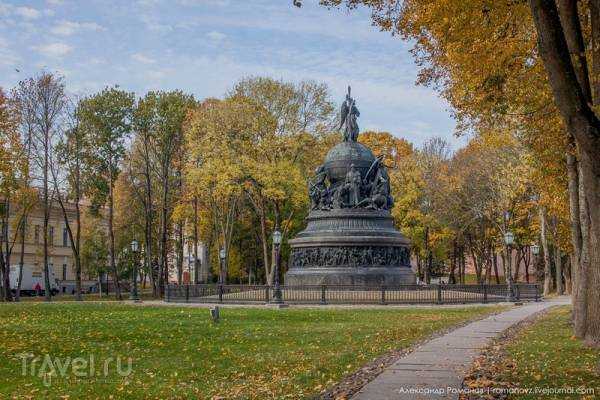
The main monument of the citadel is the well-known monument to the 1000th anniversary of Russia. The conventional date is counted from the call of Rurik to Ladoga. It was erected in the middle of the 19th century in honor of the Millennium itself. A unique example of Russian monumental art and one of the most important monuments in the country. The project of the artist Mikhail Mikeshin and the sculptor Ivan Shredder. Before the project, they were little known, but then their fame came in full force. Mikeshin is the author of the monuments to Catherine in St. Petersburg and Bohdan Khmelnitsky in Kyiv, the bell is his signature move.
Here stands Rurik with a shield, his gaze turned to the south, on the shield is written "Summer 6370". On the left is Vladimir Svyatoslavovich, turned to Kyiv. The Baptist tramples with his foot a fragment of an idol, part of which is held in the hands of an old man. On the right, Dmitry Donskoy drives away a Tatar murza and his gaze is turned to Moscow.
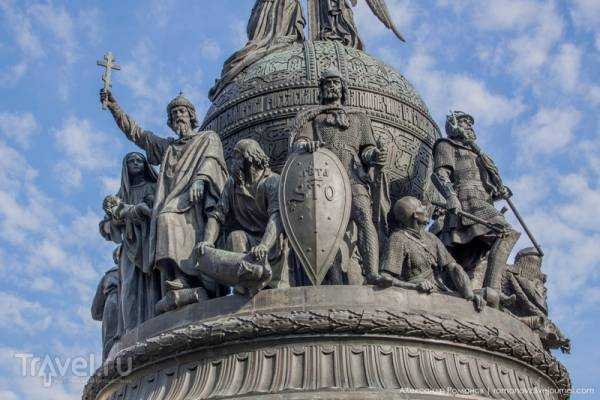
Ivan III represents the formation of the Russian state. On the left is a slain Lithuanian and a kneeling Tatar, on the right is a fallen Livonian knight.

Prince Pozharsky and Kozma Minin.

Here, of course, Peter I and the heavenly genius show him the way north to Petersburg.
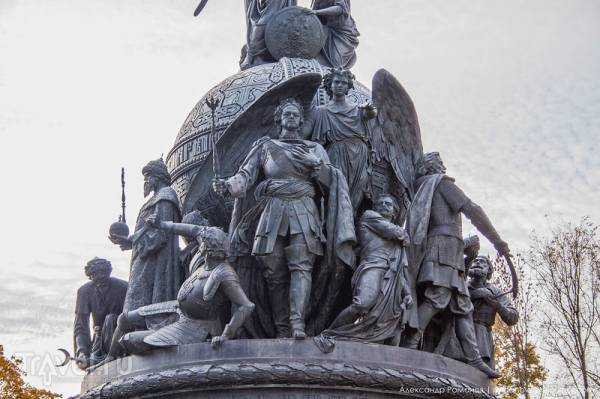
The state is crowned by an angel with a cross blessing Russia.
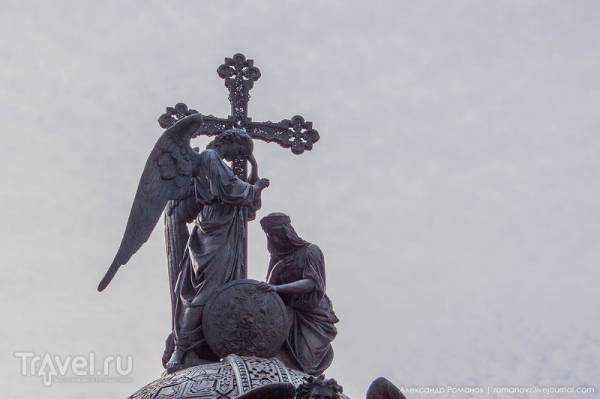
Below the monument there are an incredible number of famous figures of educators and military leaders, it would take too long to show them, I will show those guys that you would never expect to see on a monument dedicated to Russian history.
Lithuanian princes: Vitovt in a knight's helmet, Olgerd with a shield (on the shield you can see the coat of arms "pogonya") and Gediminas in a pointed helmet. The reunification with Lithuania in the Russian state was perceived as the reunification of Rus' and it is not so important that the two principalities were already part of the empire when they did not share anything between themselves. To the left of them are Vladimir Monomakh and Yaroslav the Wise.
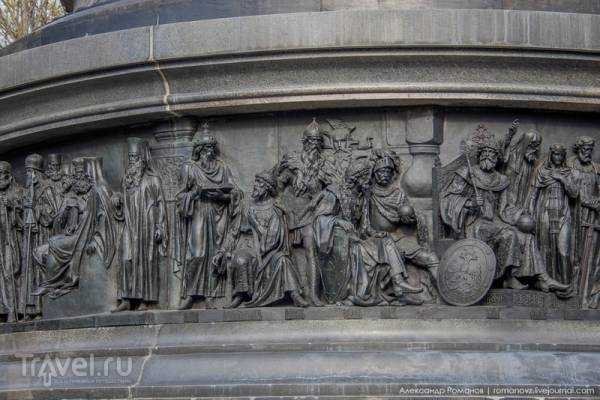
It is interesting that now the newly formed republics are constantly dividing many of these figures among themselves, although it is unlikely that any of them can claim historical continuity.
Incredibly epic thing.
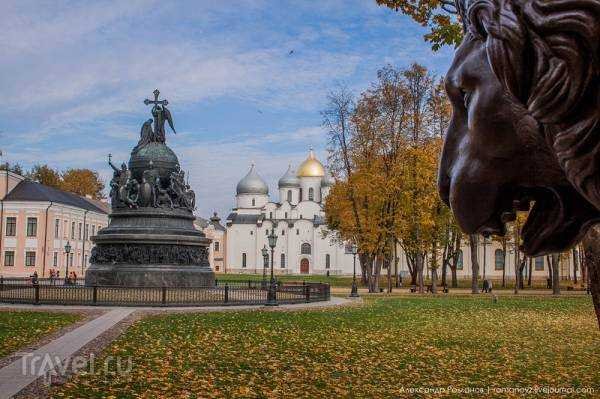
Next we will go to the Novgorod Historical Museum, located in the government building; at the entrance we are greeted by two lions.
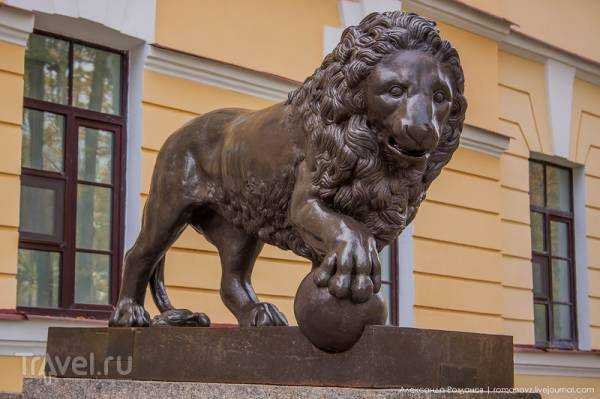
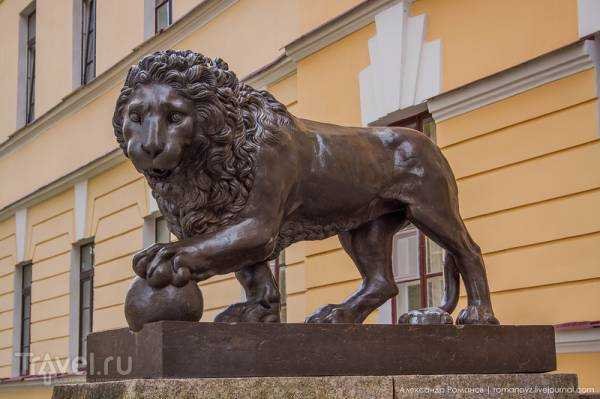
The museum's collection is very interesting, especially the part that relates to the Novgorod period.
Here is a caveman who scratched a deer on a stone.

Map of Rus' from the 10th or 11th century.
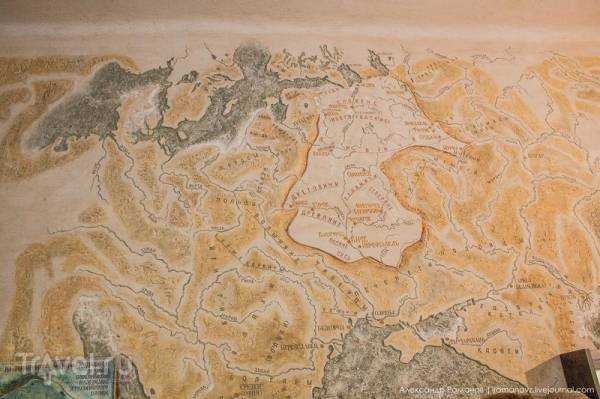
Stone idol found in Sheksna.
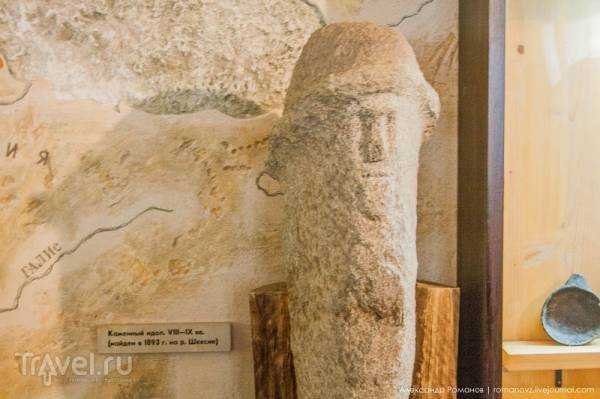
One of the main assets of the museum is a multitude of birch bark letters. Novgorod is responsible for more than half of the letters found in the territory of Rus'. People wrote about their everyday affairs on them and then simply threw them away.
The entire cultural layer of Novgorod is under the protection of UNESCO, excavations are constantly being conducted here. The treasures left by Novgorod are difficult to overestimate.


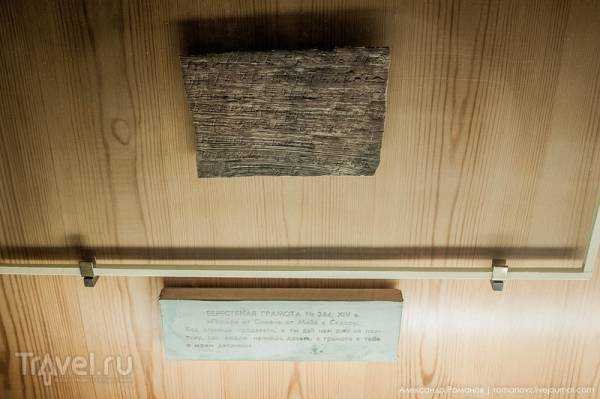
Seals of the Novgorod princes.

Amulets-serpentines transitional period from paganism to Christianity. On one side is a holy, on the other side is a pagan symbol.

They were labeled as Viking artifacts. I never understood their purpose.

The local stone crosses from different periods are interesting.
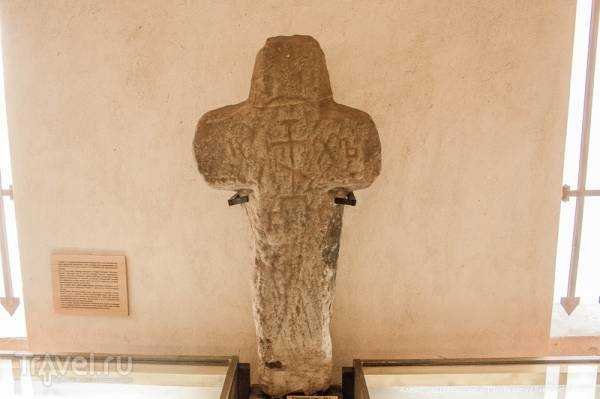

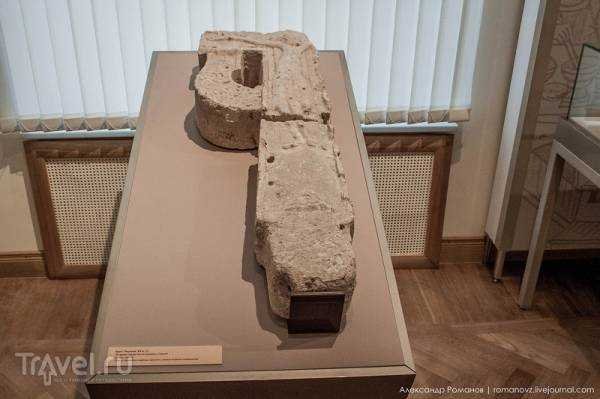

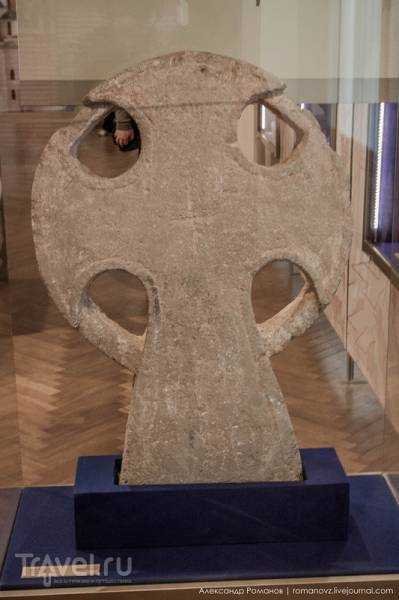
The animal details are interesting. In general, art was developing rapidly in Novgorod at that time; it was a very rich city that escaped the plundering of the Mongols and preserved its crafts and culture.
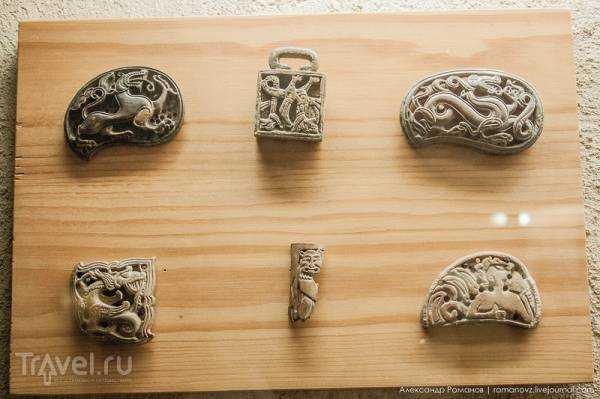
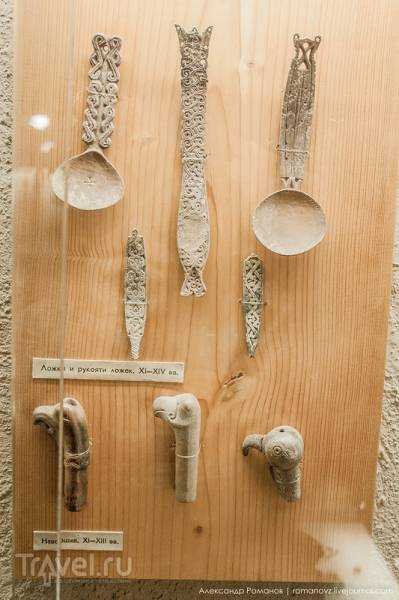
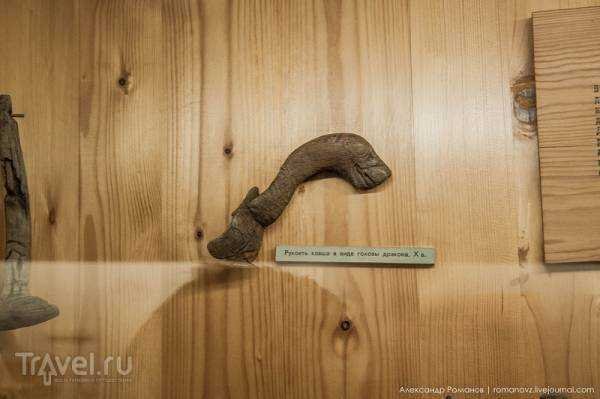




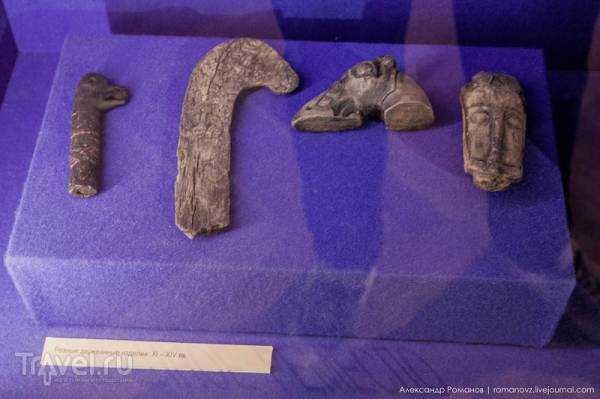
Source: travel.ru
